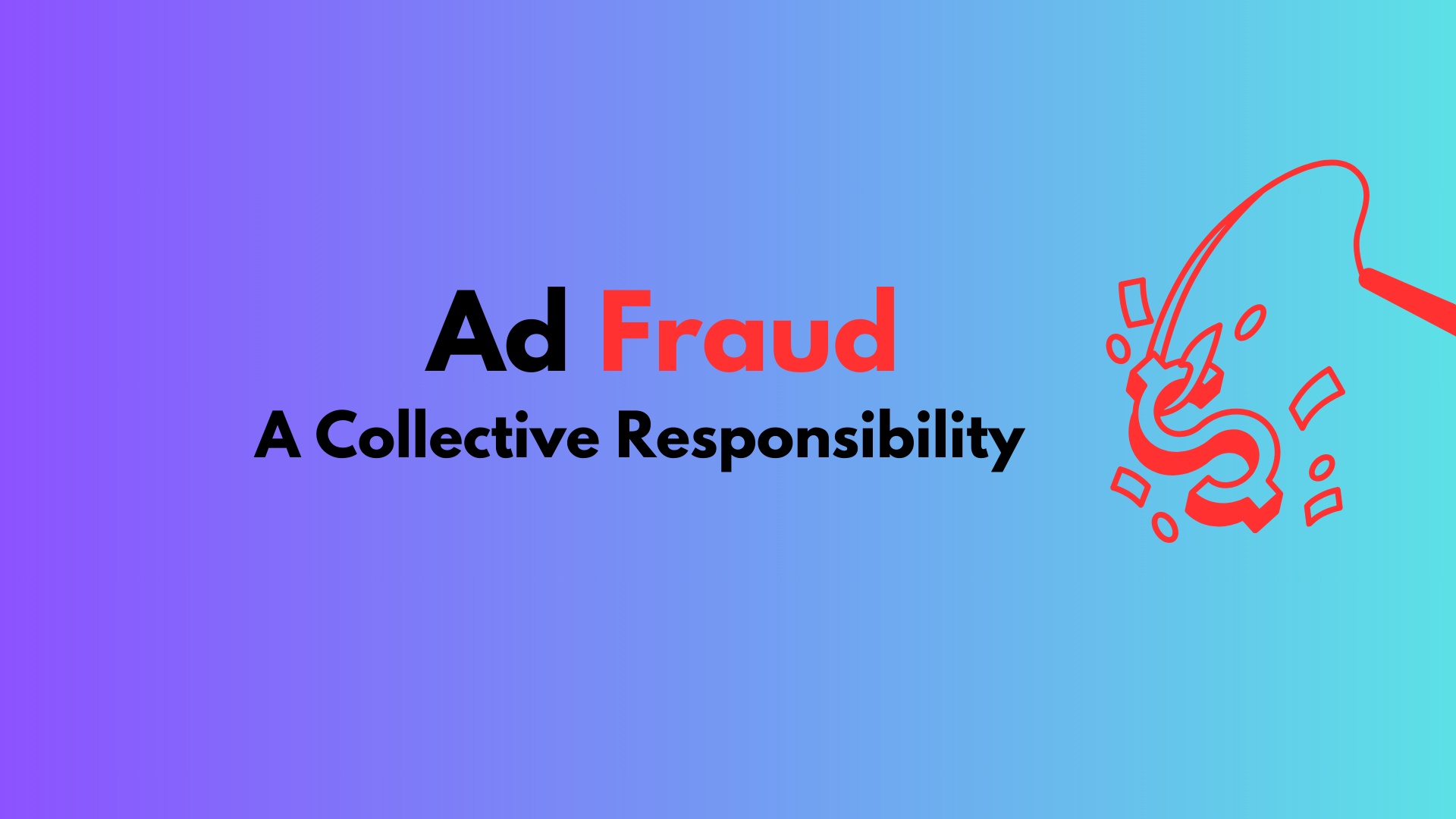In the rapidly evolving digital advertising landscape, transparency and optimization within the AdTech supply chain have become paramount. As stakeholders across the ecosystem—including advertisers, publishers, and technology providers—demand greater visibility into how ad dollars are spent, it is crucial for each player to recognize their role in fostering an accountable and efficient environment.
The Financial Impact of Fraud on Digital Advertising
Understanding Ad Fraud
Ad fraud represents a significant challenge, costing the industry billions annually. Reports indicate that global ad fraud was projected to approach $100 billion by 2023, emphasizing the urgent need for robust measures to mitigate its effects. For instance, a 2022 report by the Association of National Advertisers (ANA) highlighted that advertisers lost approximately $25 million due to fraudulent ad placements, showcasing the direct impact on businesses. This fraud not only siphons off valuable resources from advertisers but also undermines the trust that is essential for a healthy ecosystem.
Ad Waste and Inefficiency
A lack of transparency can lead to substantial ad waste. Research from the World Federation of Advertisers (WFA) suggests that over 60% of programmatic ad spend fails to reach its intended audience due to inefficiencies and undisclosed fees. Additionally, eMarketer reported that advertisers waste about 50% of their digital ad budgets, largely due to fraud, poor targeting, and lack of visibility. This inefficiency diminishes return on investment (ROI) and erodes trust among stakeholders.
The Importance of Supply Chain Transparency
- Building Trust and Accountability
Transparency is foundational for trust in the digital advertising ecosystem. By providing clear insights into campaign performance and fee structures, stakeholders can foster confidence in their investments. Advertisers deserve assurance that their ad spend is being utilized effectively, while publishers must be compensated fairly for their inventory. According to a survey by Adweek, 70% of marketers indicated that transparency is a crucial factor in their partnerships with AdTech providers.
- Combating Ad Fraud and Reducing Waste
Every stakeholder in the ecosystem has a responsibility to combat ad fraud. Initiatives such as ads.txt allow publishers to declare authorized sellers of their inventory, which helps to block unauthorized resellers. A study by the IAB found that 74% of publishers who implemented ads.txt saw a decrease in fraud attempts. Moreover, by adopting best practices and advocating for secure protocols, the industry can collectively reduce fraud and ensure that advertisers receive genuine impressions.
- Fee Transparency and Efficiency
Understanding the fee structures at each stage of the supply chain is vital for maximizing revenue potential. A 2022 report from the WFA indicated that 23% of advertisers expressed concerns about hidden fees in programmatic advertising. Transparent practices can reveal these hidden costs and facilitate better decision-making for advertisers. By optimizing fee structures and clarifying costs, more advertising dollars can flow to publishers, which ultimately benefits the entire ecosystem.
The Role of the IAB in Promoting Transparency
The Interactive Advertising Bureau (IAB) plays a crucial role in promoting transparency and best practices across the digital advertising industry. Through initiatives such as the IAB Transparency and Consent Framework (TCF) and ads.txt, the IAB provides guidelines and tools that help stakeholders navigate the complex landscape of digital advertising.
By advocating for industry standards and establishing protocols, the IAB fosters an environment where transparency is prioritized. Their efforts contribute significantly to combating ad fraud by ensuring that all players in the supply chain adhere to ethical practices, which ultimately protects advertisers, publishers, and consumers alike.
Technologies Enhancing Transparency and Optimization
- Blockchain Technology: Blockchain provides a decentralized and immutable record of transactions, enabling real-time tracking of ad placements and associated costs. A 2023 report by Deloitte highlighted that implementing blockchain could potentially reduce ad fraud by up to 50%, fostering accountability and significantly reducing fraud risk by ensuring verifiability.
- Artificial Intelligence: AI algorithms can analyze large datasets to identify patterns indicative of fraud or inefficiency, allowing for quick adjustments to maximize performance. According to McKinsey, companies utilizing AI for programmatic advertising can see a 20-30% improvement in performance metrics.
- Supply Path Optimization (SPO): SPO allows advertisers to select the most efficient routes to inventory, minimizing unnecessary intermediaries. A report from PubMatic found that implementing SPO could lead to an average savings of 30% in programmatic costs, enhancing transparency and reducing costs.
- Ads.txt and Ads.cert: The ads.txt initiative allows publishers to publicly list authorized sellers, while ads.cert verifies impression authenticity. These protocols are essential tools in the fight against fraud, helping to ensure that advertisers purchase only legitimate inventory. In fact, a recent survey by the IAB indicated that 82% of publishers using ads.txt reported enhanced trust from advertisers.
Practical Steps for Enhancing Supply Chain Transparency
- For Advertisers: Demand detailed reporting from partners that includes impression-level data and insights into ad performance. Collaborate with technology providers that prioritize transparency to maximize media spend efficiency.
- For Publishers: Maintain and regularly update ads.txt files to mitigate unauthorized sales. Establish partnerships with trusted technology providers to ensure fair compensation for your inventory.
- For Technology Providers: Implement SPO and consider adopting blockchain solutions to enhance value propositions. Clear transaction records and fee structures can help differentiate services in a competitive landscape.
- For Regulators and Industry Groups: Advocate for industry-wide standards that promote accountability and transparency. Establishing best practices can enhance the efficiency of the AdTech ecosystem and restore trust among stakeholders.
The Revenue Impact of Transparency
Studies indicate that prioritizing transparency can lead to a 10-15% increase in ROI for advertisers and up to a 20% rise in CPM rates for publishers. A 2023 analysis by eMarketer confirmed that transparency measures in programmatic advertising could boost overall campaign effectiveness by nearly 20%. By blocking unauthorized resellers and optimizing supply paths, a higher percentage of each advertising dollar can reach publishers, fostering a healthier ecosystem for all involved.
The Role of Consumer Trust
As consumers become more aware of their data privacy rights, the demand for transparency grows. Brands that prioritize transparent advertising practices are more likely to gain consumer trust, leading to higher engagement and loyalty. A survey conducted by the Edelman Trust Barometer found that 81% of consumers stated they must be able to trust a brand to buy from them, highlighting the broader implications of transparency in brand reputation.
In the AdTech ecosystem, the pursuit of supply chain transparency and optimization is a collective responsibility that impacts all players. By committing to transparent practices and leveraging advanced technologies, the industry can effectively combat fraud and inefficiencies. A more transparent advertising ecosystem not only benefits advertisers and publishers but also enhances the overall trust and effectiveness of the digital advertising landscape.
As we move forward, it is imperative that all stakeholders recognize their role in this effort. By working together, we can build a more transparent, efficient, and trustworthy advertising ecosystem that benefits everyone involved

